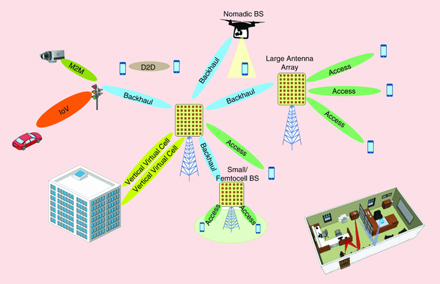|
Full title—Directional Terahertz Communication Systems for 6G: Fact Check
Sustaining a flexible and ubiquitously available high-data-rate (high-DR) network that is capable of supporting a massive number of end users demands the exploitation of higher-frequency bands, such as the terahertz band (0.1–10 THz).
However, the utilization of terahertz wireless systems comes with a number of challenges, many of them associated with the very high propagation losses of terahertz signals, which require the utilization of high-gain directional antennas with strict beam alignment requirements as well as the low signal penetration of (sub)millimeter waves, which leads to intermittent blockage and shadow areas.

The key application scenarios of terahertz wireless systems in the 6G era.
In this article, a quantitative discussion of these phenomena and their implications in both backhaul and fronthaul applications of the terahertz spectrum is provided. Starting from state-of-the-art demonstrated terahertz technology parameters, the directivity requirements, impact of beam misalignment, and opportunities for multihop relaying in two different application scenarios are described. For the same conditions, the impact of blockage is quantified, and the benefits of reconfigurable intelligent surfaces (RISs) are studied.
Finally, the implications of blockage on the physical-layer security of terahertz systems are presented.
Full Article: IEEE Vehicular Technology Magazine, Volume 16, Number 4, December 2021 |